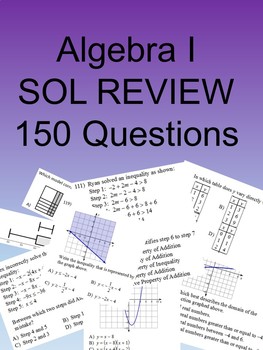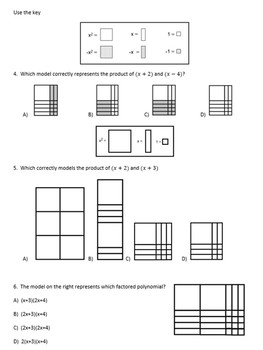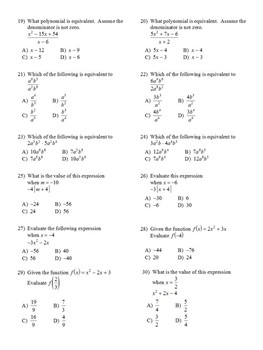Algebra I 150 Multiple Choice SOL type questions
- Zip
Description
I have recently updated this product so that it is editable and has an easier to read format. In addition to a pdf you will receive a docx file that has the questions as images. You can delete questions, rearrange, or insert your own questions.
150 mostly multiple choice questions with a few multiple answers and free response as well similar to questions from the Virginia SOLs. Questions cover the entire algebra I curriculum.
Use as Final Exam review or SOL Review.
There are at least two questions on each concept, so that you can go over one and have students complete the second for independent practice.
Topics covered include:
Box and whisker plot, Algeblocks, multiple representations, verbal representations, literal equations, solving equations/ inequalities, graphing equations/inequalities/systems, functions, polynomial operations, laws of exponents, simplifying radicals, line/curve of best fit, word problems, statistics, slope, properties, direct/inverse variation





